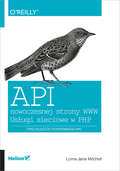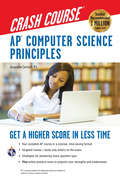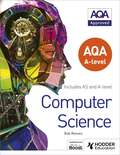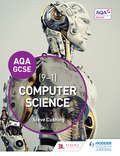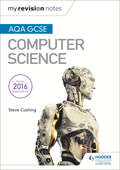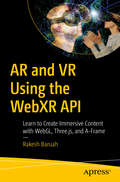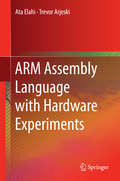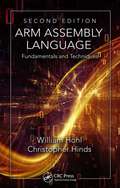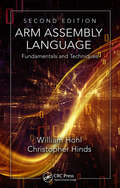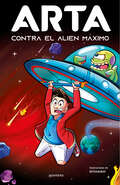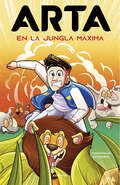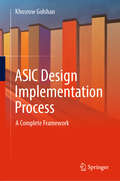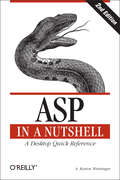- Table View
- List View
API nowoczesnej strony WWW. Us?ugi sieciowe w PHP
by Lorna Jane MitchellTwój klucz do doskona?ego API!Za sukcesem i si?? najpopularniejszych serwisów w sieci cz?sto stoi decyzja o szerokim udost?pnieniu API (ang. Application Programming Interface). Dzi?ki temu programi?ci z ca?ego ?wiata mog? tworzy? rozwi?zania oparte na istniej?cych us?ugach, integrowa? ró?ne systemy oraz tworzy? rozszerzenia. Si?gnij po t? ksi??k?, naucz si? korzysta? z udost?pnionego API i zbuduj w?asne.Poznaj tajniki budowania przyjaznego interfejsu API. Ta ksi??ka pomo?e Ci zorientowa? si?, jak dzia?a protokó? HTTP, jakie metody udost?pnia oraz jakie informacje mo?esz znale?? w nag?ówkach. Po opanowaniu podstaw przejdziesz do najpopularniejszych formatów wymiany informacji pomi?dzy systemami — JSON oraz XML. Zaznajomisz si? te? z us?ugami SOAP, RPC i REST. Na sam koniec dowiesz si?, jak projektowa? niezawodne us?ugi oraz obs?ugiwa? b??dy. Je?eli chcesz, ?eby Twoje API zainteresowa?o innych programistów, musisz zadba? o jego dobr? dokumentacj?. Zdob?d? niezb?dn? wiedz? o PHP! Poznasz protokó? HTTP, czasowniki cyklu ??da? i odpowiedzi oraz nag?ówki i ciasteczka. Dowiesz si?, kiedy lepiej jest u?y? formatu JSON, a kiedy XML. Nauczysz si? tworzy? us?ugi typu RPC, SOAP i RESTful. Poznasz wiele narz?dzi i technik diagnozowania us?ug sieciowych HTTP. Nauczysz si? wybiera? najlepszy rodzaj us?ugi dla swoich aplikacji i dowiesz si?, jak tworzy? niezawodne us?ugi sieciowe. Nauczysz si? dokumentowa? swoje interfejsy API — oraz projektowa? w nich mechanizmy obs?ugi b??dów.Zbuduj API zgodne z oczekiwaniami innych programistów!
APIs: Creating Channels with Application Programming Interfaces
by Dan Woods Daniel Jacobson Greg BrailProgrammers used to be the only people excited about APIs, but now a growing number of companies see them as a hot new product channel. This concise guide describes the tremendous business potential of APIs, and demonstrates how you can use them to provide valuable services to clients, partners, or the public via the Internet. You’ll learn all the steps necessary for building a cohesive API business strategy from experts in the trenches.Facebook and Twitter APIs continue to be extremely successful, and many other companies find that API demand greatly exceeds website traffic. This book offers executives, business development teams, and other key players a complete roadmap for creating a viable API product.Learn about the rise of APIs and why your business might need oneUnderstand the roles of asset owners, providers, and developers in the API value chainBuild strategies for designing, implementing, and marketing your productDevise an effective process for security and user managementAddress legal issues, such as rights management and terms of useManage traffic and user experience with a reliable operating modelDetermine the metrics you need to measure your API’s success
AP® Computer Science Principles Crash Course
by Jacqueline CorricelliAP® Computer Science Principles Crash Course®A Higher Score in Less Time!REA's AP® Computer Science Principles Crash Course® is the top choice for the last-minute studier or any Computer Science Principles student who wants a quick refresher on the course. Are you crunched for time? Have you started studying for your Advanced Placement® Computer Science Principles exam yet? How will you memorize everything you need to know before the test? Do you wish there was a fast and easy way to study for the exam AND boost your score? If this sounds like you, don't panic. REA's Crash Course for AP® Computer Science Principles is just what you need. Our Crash Course gives you: Targeted Review - Study Only What You Need to Know. The review is based on an in-depth analysis of the AP® Computer Science Principles course description outline and sample AP® test questions. It covers only the information tested on the exam, so you can make the most of your valuable study time. Expert Test-taking Strategies and Advice. Written by Jacqueline Corricelli, an award-winning AP® Computer Science Principles teacher and test development expert, the book gives you the topics and critical context that will matter most on exam day. Crash Course® relies on the author’s extensive analysis of the test’s structure and content. By following her advice, you can boost your score. REA's Online Practice Exam. Are you ready for your exam? Take REA's practice exam and find out. You'll get the benefits of timed testing, detailed explanations of answers, and automatic scoring analysis. Our practice exam is balanced to include every topic and type of question found on the actual AP® exam, so you'll be confident on test day. Whether you're cramming for the exam or reinforcing what you learn as you go through the course, this is the study guide every AP® Computer Science Principles student must have.
AQA A level Computer Science
by Bob ReevesThis title has been approved by AQA for use with the new AS and A-level AQA Computer Science specifications. AQA A-level Computer Science gives students the chance to think creatively and progress through the AQA AS and A-level Computer Science specifications. Detailed coverage of the specifications will enrich understanding of the fundamental principles of computing, whilst a range of activities help to develop the programming skills and computational thinking skills at A-level and beyond. - Enables students to build a thorough understanding of the fundamental principles in the AQA AS and A-Level Computer Science specifications, with detailed coverage of programming, algorithms, data structures and representation, systems, databases and networks, uses and consequences. - Helps to tackle the various demands of the course confidently, with advice and support for programming and theoretical assessments and the problem-solving or investigative project at A-level. - Develops the programming and computational thinking skills for A-level and beyond - frequent coding and question practice will help students apply their knowledge of the principles of computer science, and design, program and evaluate problem-solving computer systems. Bob Reeves is an experienced teacher with examining experience, and well-respected author of resources for Computing and ICT across the curriculum.
AQA A level Computer Science
by Bob ReevesExam Board: AQALevel: AS/A-levelSubject: Computer ScienceFirst Teaching: September 2015First Exam: June 2016This title has been approved by AQA for use with the AS and A-level AQA Computer Science specifications. AQA A-level Computer Science gives students the chance to think creatively and progress through the AQA AS and A-level Computer Science specifications. Detailed coverage of the specifications will enrich understanding of the fundamental principles of computing, whilst a range of activities help to develop the programming skills and computational thinking skills at A-level and beyond. - Enables students to build a thorough understanding of the fundamental principles in the AQA AS and A-Level Computer Science specifications, with detailed coverage of programming, algorithms, data structures and representation, systems, databases and networks, uses and consequences.- Helps to tackle the various demands of the course confidently, with advice and support for programming and theoretical assessments and the problem-solving or investigative project at A-level.- Develops the programming and computational thinking skills for A-level and beyond - frequent coding and question practice will help students apply their knowledge of the principles of computer science, and design, program and evaluate problem-solving computer systems. Bob Reeves is an experienced teacher with examining experience, and well-respected author of resources for Computing and ICT across the curriculum.
AQA A level Computer Science
by Bob ReevesExam Board: AQALevel: AS/A-levelSubject: Computer ScienceFirst Teaching: September 2015First Exam: June 2016This title has been approved by AQA for use with the AS and A-level AQA Computer Science specifications. AQA A-level Computer Science gives students the chance to think creatively and progress through the AQA AS and A-level Computer Science specifications. Detailed coverage of the specifications will enrich understanding of the fundamental principles of computing, whilst a range of activities help to develop the programming skills and computational thinking skills at A-level and beyond. - Enables students to build a thorough understanding of the fundamental principles in the AQA AS and A-Level Computer Science specifications, with detailed coverage of programming, algorithms, data structures and representation, systems, databases and networks, uses and consequences.- Helps to tackle the various demands of the course confidently, with advice and support for programming and theoretical assessments and the problem-solving or investigative project at A-level.- Develops the programming and computational thinking skills for A-level and beyond - frequent coding and question practice will help students apply their knowledge of the principles of computer science, and design, program and evaluate problem-solving computer systems. Bob Reeves is an experienced teacher with examining experience, and well-respected author of resources for Computing and ICT across the curriculum.
AQA Computer Science for GCSE Student Book
by Steve CushingBuild student confidence and ensure successful progress through GCSE Computer Science. Our expert authors provide insight and guidance to meet the demands of the new AQA specification, with challenging tasks and activities to test the computational skills and knowledge required for success in their exams, and advice for successful completion of the non-examined assessment.- Builds students' knowledge and confidence through detailed topic coverage and explanation of key terms- Develops computational thinking skills with practice exercises and problem-solving tasks- Ensures progression through GCSE with regular assessment questions, that can be developed with supporting Dynamic Learning digital resources- Instils a deeper understanding and awareness of computer science, and its applications and implications in the wider world
AQA GCSE Computer Science My Revision Notes 2e
by Steve CushingManage your own revision with step-by-step support from experienced teacher and examiner Steve Cushing. Use specific case studies to improve your knowledge of Computer Science. Apply terms accurately with the help of definitions and key words.-Plan and pace your revision with the revision planner-Use the expert tips to clarify key points-Avoid making typical mistakes with key expert advice-Test yourself with end-of-topic questions and answers and tick off each topic as you complete it-Get exam ready with last minute quick quizzes at www.hoddereducation.co.uk/myrevisionnotes
AQA GCSE Computer Science, Second Edition
by George Rouse Gavin Craddock Lorne PearceyUpdated specification; first teaching September 2020. Specification code: 8525Written by leading Computer Science teachers, this textbook will guide students through the updated AQA GCSE Computer Science specification topic by topic, and provide them with standalone recap and review sections, practice questions, worked examples and clear explanations of complex topics.This textbook:>> Prepares students for assessment with numerous practice questions for all topics>> Develops computational thinking skills>> Provides differentiated material with the 'beyond the spec' feature>> Includes standalone recap and review sections at the end of each chapter>> Provides definitions of technical terms, along with a glossary of words to ensure students feel confident with the assessment.AuthorsGeorge Rouse, Lorne Pearcey and Gavin Craddock are highly respected and widely published authors of resources.
AQA GCSE Computer Science, Second Edition
by George Rouse Ian Paget Gavin Craddock Lorne PearceyUpdated specification; first teaching September 2020. Specification code: 8525Written by leading Computer Science teachers, this textbook will guide students through the updated AQA GCSE Computer Science specification topic by topic, and provide them with standalone recap and review sections, practice questions, worked examples and clear explanations of complex topics.This textbook:>> Prepares students for assessment with numerous practice questions for all topics>> Develops computational thinking skills>> Provides differentiated material with the 'beyond the spec' feature>> Includes standalone recap and review sections at the end of each chapter>> Provides definitions of technical terms, along with a glossary of words to ensure students feel confident with the assessment.AuthorsGeorge Rouse, Lorne Pearcey and Gavin Craddock are highly respected and widely published authors of resources.
AR and VR Using the WebXR API: Learn to Create Immersive Content with WebGL, Three.js, and A-Frame
by Rakesh BaruahGain an in-depth knowledge in immersive web development to create augmented reality (AR) and virtual reality (VR) applications inside web browsers using WebXR API, WebGL, Three.js, and A-Frame. This project-based book will provide the practice and portfolio content to make the most of what the futures of spatial computing and immersive technology have to offer.Beginning with technical analysis of how web browsers function, the book covers programming languages such as WebGL, JavaScript, and HTML, with an eye on a complete understanding of the WebXR lifecycle. You'll then explore how contemporary web browsers work at the code level and see how to set up a local development server and use it with the Visual Studio Code IDE to create 3D animation in the WebGL programming language. With a familiarity of the web-rendering pipeline in place, you’ll venture on to WebGL abstractions such as the Three.js JavaScript library and Mozilla’s A-Frame XR Framework, which use WebXR to create high-end visual effects. In the final projects of the book, you’ll create an augmented reality web session for an Android phone device, and create a VR scene in A-Frame (built on Three.js) to demo essential components of the WebXR API pertaining to user positioning and interaction.Game engines have become common-place for the creation of mixed reality content. However, developers not interested in learning entirely new workflows may be better suited to work within a medium almost universally open to all—the web; AR and VR Using the WebXR API will show you the way.What You'll LearnMaster the creation of virtual reality and augmented reality features for web pagePrepare to work as an immersive web developer with a portfolio of projects in sought-after technologiesReview the fundamentals of writing shaders in WebGLExperience the unity between client, server, and cloud architecture as it applies to location-based ARWho This Book Is ForAspiring immersive web developers and developers already familiar with the fundamentals of web development who want to further explore topics such as spatial computing, computer vision, spatial anchors, and cloud-computing for multi-user social experiences.
ARM Assembly Language with Hardware Experiments
by Ata Elahi Trevor ArjeskiThis book provides a hands-on approach to learning ARM assembly language with the use of a TI microcontroller. The book starts with an introduction to computer architecture and then discusses number systems and digital logic. The text covers ARM Assembly Language, ARM Cortex Architecture and its components, and Hardware Experiments using TILM3S1968. Written for those interested in learning embedded programming using an ARM Microcontroller.
ARM Assembly Language: Fundamentals and Techniques
by William Hohl Christopher HindsDelivering a solid introduction to assembly language and embedded systems, ARM Assembly Language: Fundamentals and Techniques, Second Edition continues to support the popular ARM7TDMI, but also addresses the latest architectures from ARM, including Cortex™-A, Cortex-R, and Cortex-M processors―all of which have slightly different instruction sets, programmer’s models, and exception handling.
ARM Assembly Language: Fundamentals and Techniques
by William Hohl Christopher Hinds Kevin WeltonARM Assembly Language: Fundamentals and Techniques, Third Edition explains in clear terms how ARM processors are programmed at the most fundamental level. While earlier editions covered much older architectures, the Third Edition moves entirely into the Cortex-M space, using the Armv8-M instruction set to illustrate how assembly code for the most modern Arm processors is written. Even if you are writing in JavaScript, Python, C++, C#, or Rust, these high-level programming languages require a compiler or interpreter to transform the code into machine-executable instructions, so software and hardware engineers will gain valuable insight into how their code is executing from knowing how the underlying processor functions.Featuring chapters updated to Armv8-M throughout this book, this edition: Moves all examples into the Keil MDK environment, which uses armclang and a GNU-like syntax that is very popular in the industry Includes an appendix that helps students set up the Keil tools for use throughout this book Describes the IEEE 754 floating-point arithmetic supported by the Armv8-M processors implementing the optional Floating-Point Unit (FPU) Features an updated chapter on mixing C and assembly code together Discusses features and concepts found in the most advanced Arm processors, such as the Cortex-A and Cortex-X families using Armv9 architectures Written by authors who each have more than 35 years of experience in the semiconductor industry, ARM Assembly Language: Fundamentals and Techniques, Third Edition makes an ideal textbook for students wanting to learn about microprocessors but who may possess only a basic knowledge of programming and logic.
ARM Assembly Language: Fundamentals and Techniques, Second Edition
by William Hohl Christopher HindsDelivering a solid introduction to assembly language and embedded systems, ARM Assembly Language: Fundamentals and Techniques, Second Edition continues to support the popular ARM7TDMI, but also addresses the latest architectures from ARM, including Cortex�-A, Cortex-R, and Cortex-M processors-all of which have slightly different instruction sets, p
ARM Microprocessor Systems: Cortex-M Architecture, Programming, and Interfacing
by Kashif Javed Muhammad TahirThis book presents the use of a microprocessor-based digital system in our daily life. Its bottom-up approach ensures that all the basic building blocks are covered before the development of a real-life system. The ultimate goal of the book is to equip students with all the fundamental building blocks as well as their integration, allowing them to implement the applications they have dreamed up with minimum effort.
ARM® Cortex® M4 Cookbook
by Dr Mark FisherOver 50 hands-on recipes that will help you develop amazing real-time applications using GPIO, RS232, ADC, DAC, timers, audio codecs, graphics LCD, and a touch screen About This Book * This book focuses on programming embedded systems using a practical approach * Examples show how to use bitmapped graphics and manipulate digital audio to produce amazing games and other multimedia applications * The recipes in this book are written using ARM's MDK Microcontroller Development Kit which is the most comprehensive and accessible development solution Who This Book Is For This book is aimed at those with an interest in designing and programming embedded systems. These could include electrical engineers or computer programmers who want to get started with microcontroller applications using the ARM Cortex-M4 architecture in a short time frame. The book's recipes can also be used to support students learning embedded programming for the first time. Basic knowledge of programming using a high level language is essential but those familiar with other high level languages such as Python or Java should not have too much difficulty picking up the basics of embedded C programming. What You Will Learn * Use ARM's uVision MDK to configure the microcontroller run time environment (RTE), create projects and compile download and run simple programs on an evaluation board. * Use and extend device family packs to configure I/O peripherals. * Develop multimedia applications using the touchscreen and audio codec beep generator. * Configure the codec to stream digital audio and design digital filters to create amazing audio effects. * Write multi-threaded programs using ARM's real time operating system (RTOS). * Write critical sections of code in assembly language and integrate these with functions written in C. * Fix problems using ARM's debugging tool to set breakpoints and examine variables. * Port uVision projects to other open source development environments. In Detail Embedded microcontrollers are at the core of many everyday electronic devices. Electronic automotive systems rely on these devices for engine management, anti-lock brakes, in car entertainment, automatic transmission, active suspension, satellite navigation, etc. The so-called internet of things drives the market for such technology, so much so that embedded cores now represent 90% of all processor's sold. The ARM Cortex-M4 is one of the most powerful microcontrollers on the market and includes a floating point unit (FPU) which enables it to address applications. The ARM Cortex-M4 Microcontroller Cookbook provides a practical introduction to programming an embedded microcontroller architecture. This book attempts to address this through a series of recipes that develop embedded applications targeting the ARM-Cortex M4 device family. The recipes in this book have all been tested using the Keil MCBSTM32F400 board. This board includes a small graphic LCD touchscreen (320x240 pixels) that can be used to create a variety of 2D gaming applications. These motivate a younger audience and are used throughout the book to illustrate particular hardware peripherals and software concepts. C language is used predominantly throughout but one chapter is devoted to recipes involving assembly language. Programs are mostly written using ARM's free microcontroller development kit (MDK) but for those looking for open source development environments the book also shows how to configure the ARM-GNU toolchain. Some of the recipes described in the book are the basis for laboratories and assignments undertaken by undergraduates. Style and approach The ARM Cortex-M4 Cookbook is a practical guide full of hands-on recipes. It follows a step-by-step approach that allows you to find, utilize and learn ARM concepts quickly.
ARTA contra el alien máximo (Arta Game #Volumen 3)
by Arta Game¡Arta vivirá su misión más épica en un libro increíble a todo color! ¿Estás preparado para sobrevivir contra el alien máximo? ARTA ESTÁ EN PELIGRO. ¿SOBREVIVIRÁ CONTRA EL ALIEN MÁXIMO?El mundo ha sido invadido por un montón de extraterrestres. AL PRINCIPIO solo eran unos cuantos aliens. DESPUÉS llegaron más naves. Y AHORA muchos humanos se han pasado al bando de los extraterrestres.Arta y sus amigos tienen que hacer algo si quieren parar la invasión alienígena. Pero la única manera de acabar con los extraterrestres es derrotar al ALIEN MÁXIMO, y enfrentarse a ese monstruo verde puede significar el fin de todo. CADA PASO QUE DAN LOS ALIENS PONE EN PELIGRO EL PLANETA TIERRA... ¿CONSEGUIRÁN SOBREVIVIR Y DERROTAR AL ALIEN MÁXIMO ANTES DE QUE ARRASE CON TODO?
ARTA en el apocalipsis máximo
by Arta GameARTA ESTÁ EN PELIGRO. ¿SOBREVIVIRÁ AL APOCALIPSIS MÁXIMO? Adéntrate en el nuevo libro del youtuber del momento para descubrirlo. En la Tierra están pasando cosas extrañas:PRIMERO, los volcanes del mundo han entrado en erupción.DESPUÉS, ha habido un gran apagón.AHORA han aparecido bichos raros por todas partes. El mundo entero está en riesgo, y Arta y sus amigos tienen que huir del planeta si quieren sobrevivir. Pero no será nada fácil, aún menos cuando algunos de ellos desaparecen por el camino. Y si algo tiene claro Arta es que no piensa dejar a nadie atrás. Cada minuto que pasa es una oportunidad perdida de poder sobrevivir... ¿CONSEGUIRÁN RESISTIR AL FIN DEL MUNDO Y ESCAPAR A TIEMPO? ACOMPAÑA A ARTA GAME EN SU VIAJE MÁS ÉPICO¿Estás preparado para salvar al mundo del apocalipsis?
ARTA en la jungla máxima (Arta Game #Volumen 5)
by Arta GameARTA ESTÁ EN PELIGRO. ¿SOBREVIVIRÁ EN LA JUNGLA MÁXIMA? Un aparato que podría terminar con el apocalipsis ha sido encontrado. SIN EMBARGO, parece que está sin acabar. ADEMÁS, no se sabe dónde están los científicos rusos que lo crearon. Y PARA REMATAR, los extraterrestres vuelven a estar en la Tierra.Arta y sus amigos tienen que encontrar a los científicos como sea. Pero para conseguirlo deberán cruzar la jungla, escapar de un barco de contrabandistas y conseguir una avispa tan ultravenenosa que podría acabar con todo. CADA VEZ ESTÁN MÁS CERCA DE TERMINAR CON EL APOCALIPSIS. ¿CONSEGUIRÁN CUMPLIR SU MISIÓN ANTES DE QUE SE ACABE EL MUNDO?
ARTA y la invasión máxima (Arta Game #Volumen 2)
by Arta Game¡Arta vivirá su misión más épica en un libro increíble a todo color! ¿Estás preparado para sobrevivir a la invasión máxima? El avión en el que Arta viajaba ha tenido un accidente y ha aterrizado a un mundo demasiado extraño. PARA EMPEZAR, el cielo es morado.ADEMÁS, no hay rastro de gente.Y, PARA REMATAR, hay una grieta enorme en el cielo, de la que salen cosas peligrosísimas. Arta y sus amigos tendrán que enfrentarse a todo tipo de invasiones para sobrevivir. Dinosaurios hambrientos, ratas locas, abejas gigantes... Solo hay una manera de parar la invasión máxima: cerrar la grieta, aunque para hacerlo tengan que arriesgar sus vidas. CADA NUEVA INVASIÓN AMENAZA EL MUNDO ENTERO...¿CONSEGUIRÁN SOBREVIVIR Y FRENAR LA INVASIÓN ANTES DE QUE SEA DEMASIADO TARDE?
ASIC Design Implementation Process: A Complete Framework
by Khosrow GolshanThis book is an easy-to-read guide, providing a complete framework for the ASIC design process. Based on the author’s extensive experience leading ASIC design teams, this book emphasizes short, clear descriptions, supplemented by references to authoritative manuscripts. This approach presents the essence of the ASIC design implementation process for those involved in a specific part of the process, while providing knowledge of the entire process.
ASIC Design and Synthesis: RTL Design Using Verilog
by Vaibbhav TaraateThis book describes simple to complex ASIC design practical scenarios using Verilog. It builds a story from the basic fundamentals of ASIC designs to advanced RTL design concepts using Verilog. Looking at current trends of miniaturization, the contents provide practical information on the issues in ASIC design and synthesis using Synopsys DC and their solution. The book explains how to write efficient RTL using Verilog and how to improve design performance. It also covers architecture design strategies, multiple clock domain designs, low-power design techniques, DFT, pre-layout STA and the overall ASIC design flow with case studies. The contents of this book will be useful to practicing hardware engineers, students, and hobbyists looking to learn about ASIC design and synthesis.
ASP in a Nutshell: A Desktop Quick Reference
by Keyton WeissingerASP in a Nutshell provides the high-quality reference documentation that web application developers really need to create effective Active Server Pages. It focuses on how features are used in a real application and highlights little-known or undocumented features.This book also includes an overview of the interaction between the latest release of Internet Information Server (version 5) and ASP 3.0, with an introduction to the IIS object model and the objects it comprises. The examples shown in this section and throughout the book are illustrated in VBScript.The main components of this book are:Active Server Pages Introduction. Brief overview of the ASP application paradigm with examples in VBScript. Also included is an introduction to Microsoft's Internet Information Server 5.0, the IIS object model, and the objects that it comprises.Object Reference. Each object is discussed in the following manner: descriptions, properties, collections, methods, events, accessory files/required DLLs, and remarks, including real-world uses, tips and tricks, and author's experience (where applicable). The objects--Application, Response, Request, Server, Session, ObjectContext, and ASPError, as well as ASP Directives, Global.ASA, and Server-Side Includes--all follow this paradigm. Component Reference. This section follows the same paradigm found in Object Reference. The discussion covers all of the additional components included with IIS, such as ActiveX Data Objects, the Ad Rotator, the Browser capabilities component, the File System Object, and more.Appendixes. Gives examples in one or two objects and components using Perl, REXX, and Python in ASP.Like other books in the "In a Nutshell" series this book offers the facts, including critical background information, in a no-nonsense manner that users will refer to again and again. It is a detailed reference that enables even experienced web developers to advance their ASP applications to new levels.
ASP. NET Core MVC: Training and Reference
by Joel Murach Mary DelamaterIf you know the basics of C#, you're ready to learn how to create web applications using Microsoft's powerful technology, ASP.NET Core MVC (Model-View-Controller). And there's no more practical way to do it than with this book. <p><p> By the end of section 1...just 5 chapters...you'll be developing real-world web apps using C# code for the model and controller classes...HTML, CSS, and Razor code for the view files (for the user interface)...and Bootstrap classes for responsive design so that your apps adapt well to all screen sizes. You'll also be able use the debugging tools in Visual Studio and your browser to test your apps and make sure they'll work right for all users. <p><p> In section 2, you'll build out that set of skills to create more complex controllers, work with Razor views, handle cookies and sessions, do model binding, validate data, and handle database data with EF (Entity Framework) Core. You'll also see how all these skills come together in a single application, with coverage of the gotchas that can occur and how to solve them. <p><p> Finally, in section 3, you can pick up additional skills as you need them to: create custom tag helpers and view components; authenticate and authorize users; use dependency injection to automate testing; and use Visual Studio Code. <p><p> All along the way, you'll get complete web apps that show you how each feature works in context (you can download these for free from the Murach website). You'll get chapter exercises that let you practice your new skills. And you'll get Murach's distinctive paired-pages format that presents each skill in a 2-page spread, full of examples, notes, and explanation...a format that developers praise because it saves them both training and reference time.
